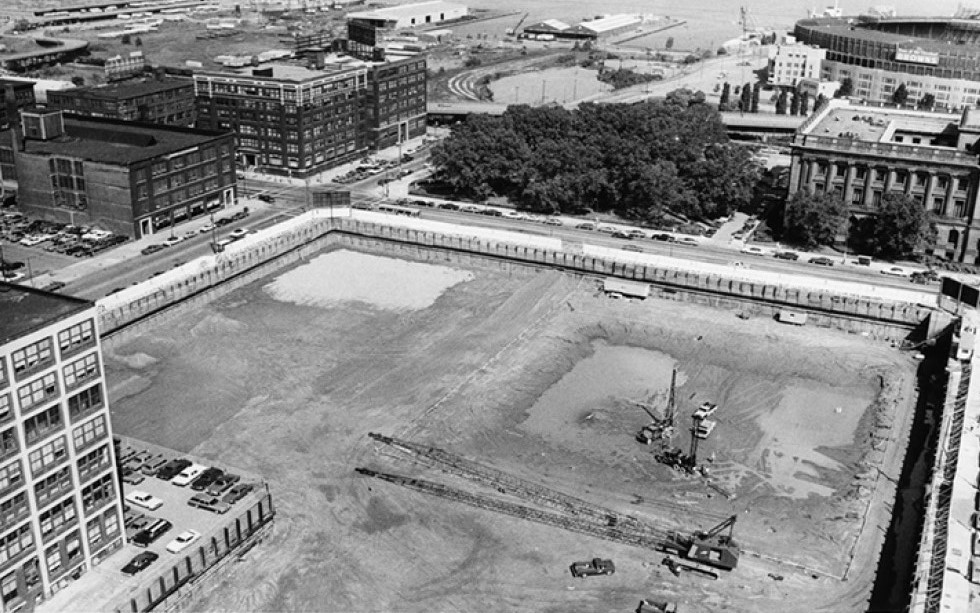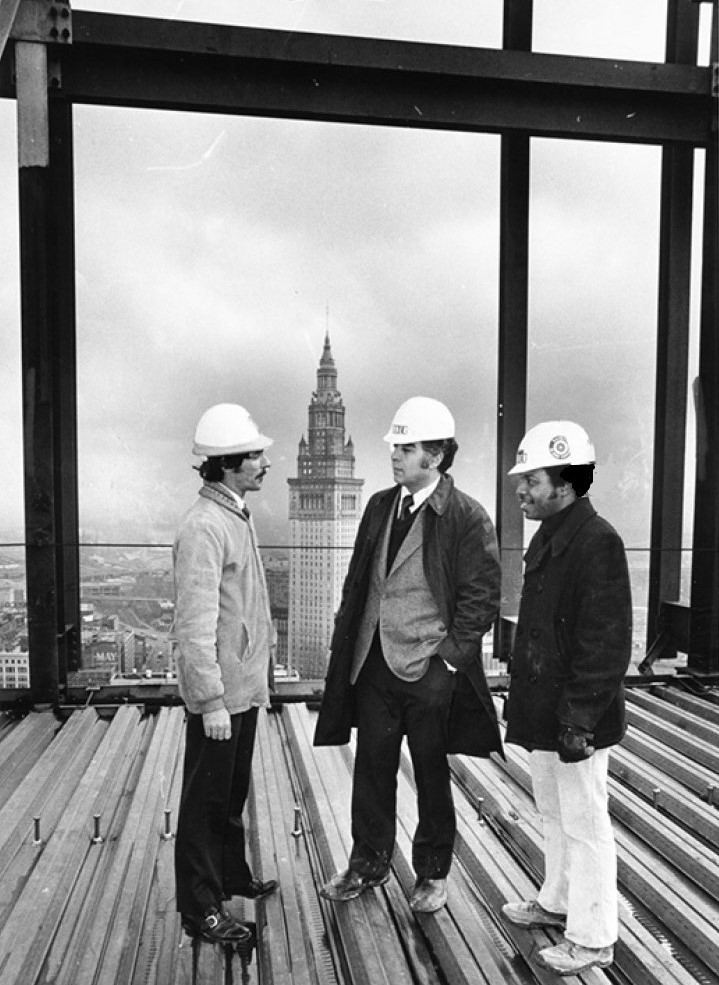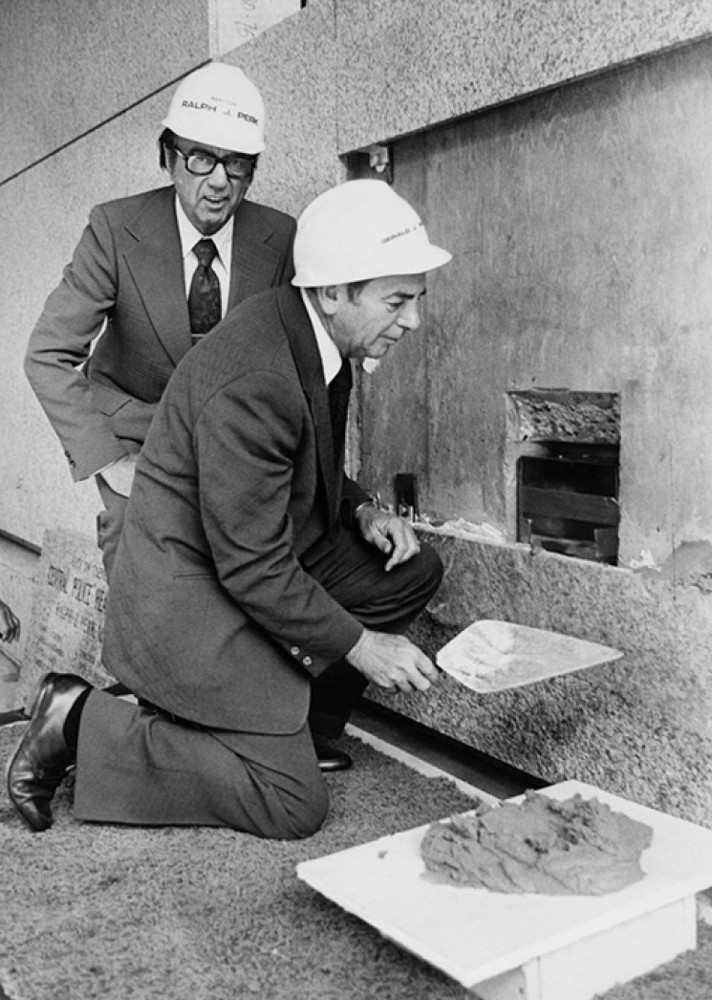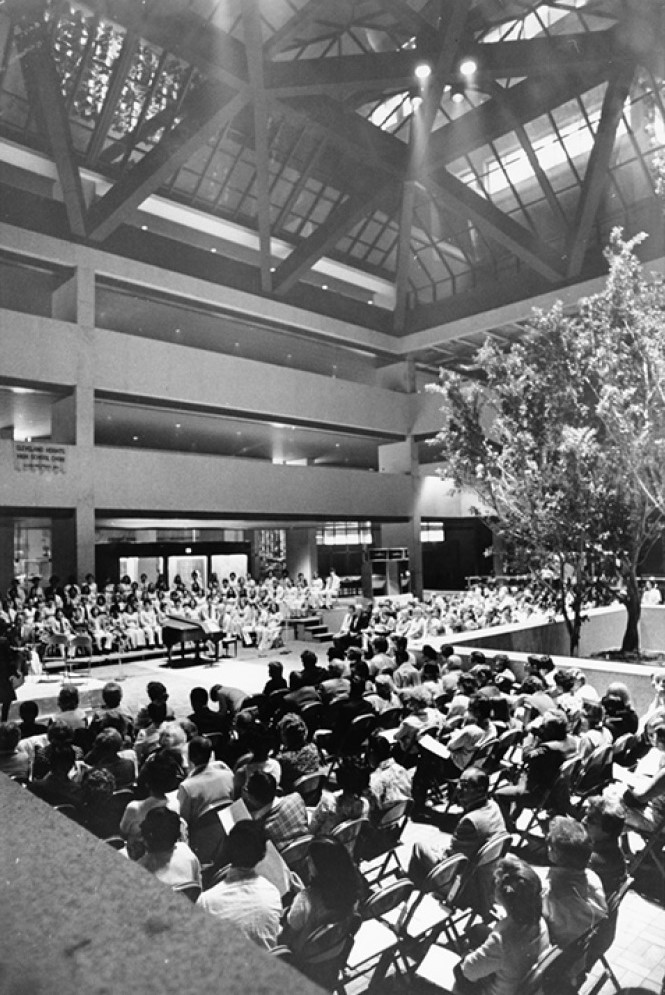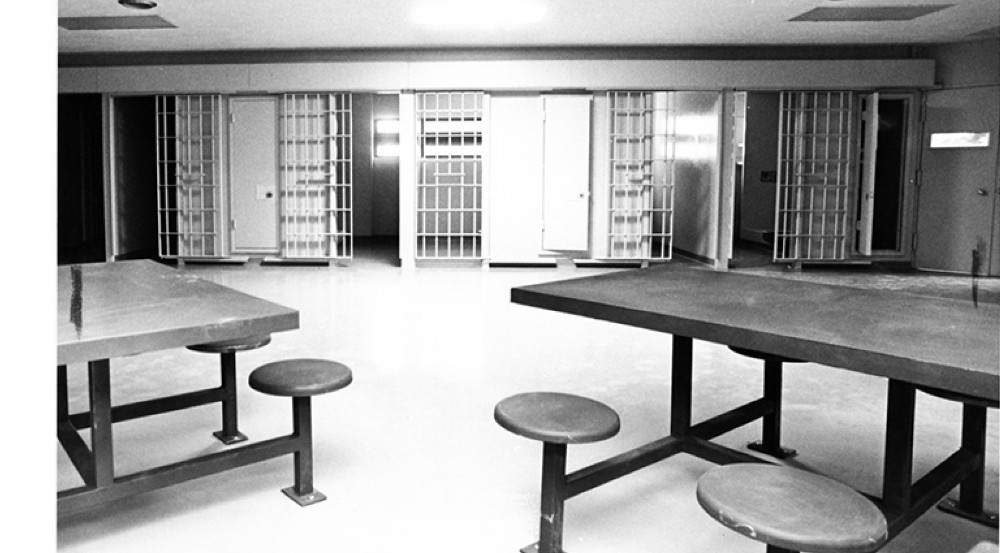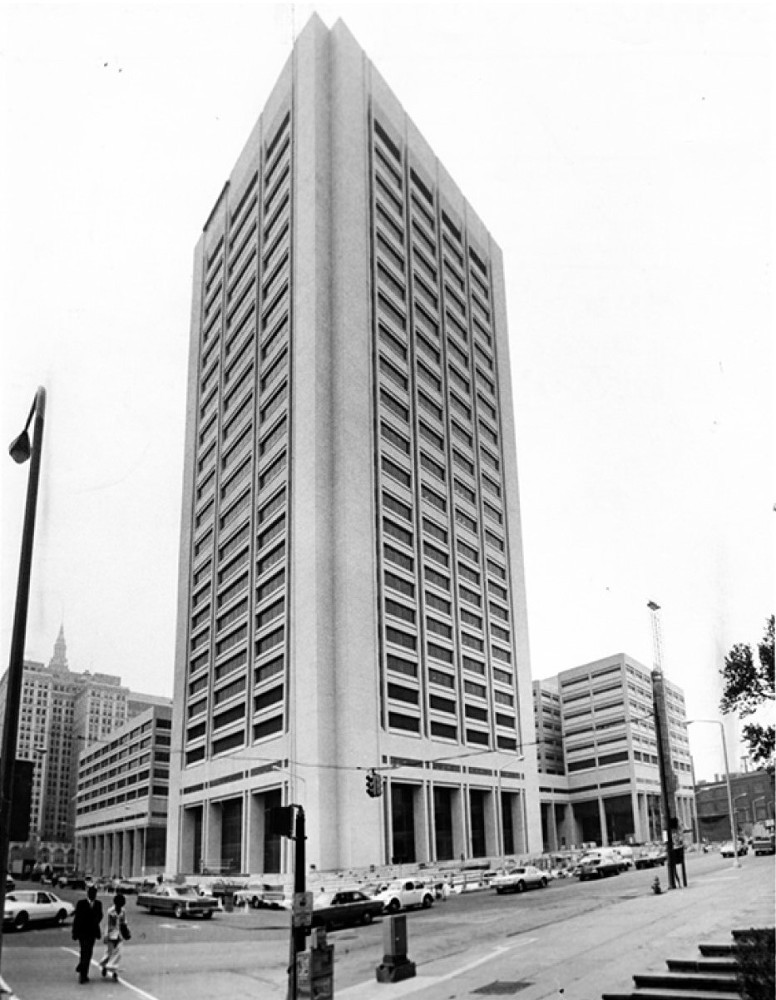The Justice Center
A City-County Collaboration More Than 50 Years in the Making

In 1923, the Cleveland Chamber of Commerce recommended the creation of a single facility to house both the Cuyahoga County Common Pleas and Cleveland Municipal Courts. Placing the two courts in the same building, it was hoped, would help address problems of corruption in the Municipal Court. In 1976, over fifty years later, the Justice Center finally opened.
In 1921, Harvard University's Dean Roscoe Pound and Professor Felix Frankfurter--a future United States Supreme Court Justice--issued a report containing a scathing indictment on the condition of criminal justice in Cleveland, particularly in Cleveland Municipal Court, which they found to be riddled with corruption. Two years later, the Cleveland Chamber of Commerce responded with its own report, concluding that the problems could be solved by creating more courtroom and jail space in the City, and by placing Cleveland Municipal Court and Cuyahoga County Common Pleas Court together in a combined facility. Little did anyone know back then that it would take the City and County more than 50 years to build that combined facility.
The Chamber's recommendation slowly began to develop some traction in the community when, in 1926, the criminal division of the Municipal Court moved into the new Central Police Station at East 21st Street and Payne Avenue, and then two years later, in 1928, the County selected a site on East 21st adjacent to the police station for its new Criminal Courthouse and Jail. The County facility was completed in 1931, and for the next several decades, Municipal and Common Pleas criminal court proceedings, while not located in a combined facility, were better coordinated and benefited by being located in adjacent buildings. By the time the 1950s arrived, however, the two Courts and the County Jail were no longer functioning well, caused, at least in part, by a swelling population and the proliferation of new laws and court procedures. The Municipal Court had once again become a public embarrassment. It was rundown and overcrowded, and was once again developing a reputation for corruption. Conditions next door in the County courthouse and jail were not much better.
At first, the City and County, as they had done in the past, decided to go it alone in addressing these court problems. Between 1958-1962, the City submitted four separate bond issues to its voters to fund a new Municipal Court building. All failed. Finally, In 1968, the City and County made their first effort to build a combined facility, belatedly joining forces on separate county and city bond issues. It was too little too late, and the two issues failed. Two years later, however, they met with success at the polls when voters approved a $61 million joint bond issue to build a Justice Center--housing the Common Pleas and Municipal Courts, the Central Police Station, and the County Jail-- on the southwest corner of Lakeside Avenue and Ontario Street.
Success at the polls in 1970 did not, however, end the challenge of finally building a combined City-County court facility in Cleveland. During the Justice Center's early development phase, the design by courthouse architects Prindle, Patrick & Partners became the subject of wide-spread criticism. The Plain Dealer, in a September 23, 1972 editorial, labeled it a "WPA design." The project was rescued only when the architects brought in Pietro Belluschi, a leading Modernist architect, to make design changes. Belluschi proposed adding a three-story Galleria to connect the three buildings for the courts, county jail, and central police station, and eliminating the floor-to-ceiling windows from those buildings and replacing much of it with Spanish pink granite. Problems continued even after the City's Fine Arts Committee approved Belluschi's revised design in June 1973. It soon became obvious that $61 million was woefully insufficient to build the project. Two floors were shaved from the 25 floors of the Courts Tower and three from the 13 floors of the County Jail, but project costs nevertheless ballooned to well over $100 million by 1974, leading the Plain Dealer to call the Justice Center a "boondoggle." When construction was finally completed in 1976, the price tag was slightly more than $133 million, more than twice what the voters had approved six years earlier.
On September 15, 1976, the Justice Center was formally dedicated by U.S. Senator Sam Ervin of Watergate fame, and shortly after that event police, prosecutors, judges, clerks, and prisoners began moving in. Unfortunately, the new Justice Center soon was beset with post-construction problems which overshadowed the success of the City and County in finally building a combined court facility. In January 1977, during an electric power outage, a pump failed causing a large hot water tank to overflow and flood three floors in the Courts Tower. It wouldn't be the last time that water--too much of it in the wrong places--became a problem for the Justice Center. Later in 1977, lightning struck the 23-story Courts Tower, raining down pieces of Spanish granite on pedestrians below. In the following decades, elevator failures, which often stranded passengers for long periods of time, became routine occurrences, nervously talked about by lawyers and clients alike. The County Jail, which had been reduced in size, soon became severely overcrowded, forcing the County to build a $68 million jail annex on the site in 1994. And over the course of all these years, stories of people being knocked off their feet by gusts of lakefront wind hitting them as they traversed the long, open inclined walkway from the main entrance of the Justice Center to Lakeside Avenue became almost legendary.
Perhaps it was the accumulation of all of these problems, as well as a failure to budget sufficient dollars to repair and properly maintain the Justice Center over the years, that led the County in 2014 to order a study to determine whether the thirty-eight year old complex, which had had such a short, but troubled history, should be renovated and repaired, or instead torn down and replaced. When the study was released, some criticized its premises and the financial estimates for the various options presented. Others feared that historic Lakeside County Courthouse might be razed and Huntington Park next door to it bulldozed to make room for a new Justice Center. Even if they get past these criticisms, the City and County will nevertheless still be forced at some point to face the past and decide whether it is likely that they could once again come together and build a combined City-County court facility better than the one they already have on the southwest corner of Lakeside Avenue and Ontario Street.
Images





